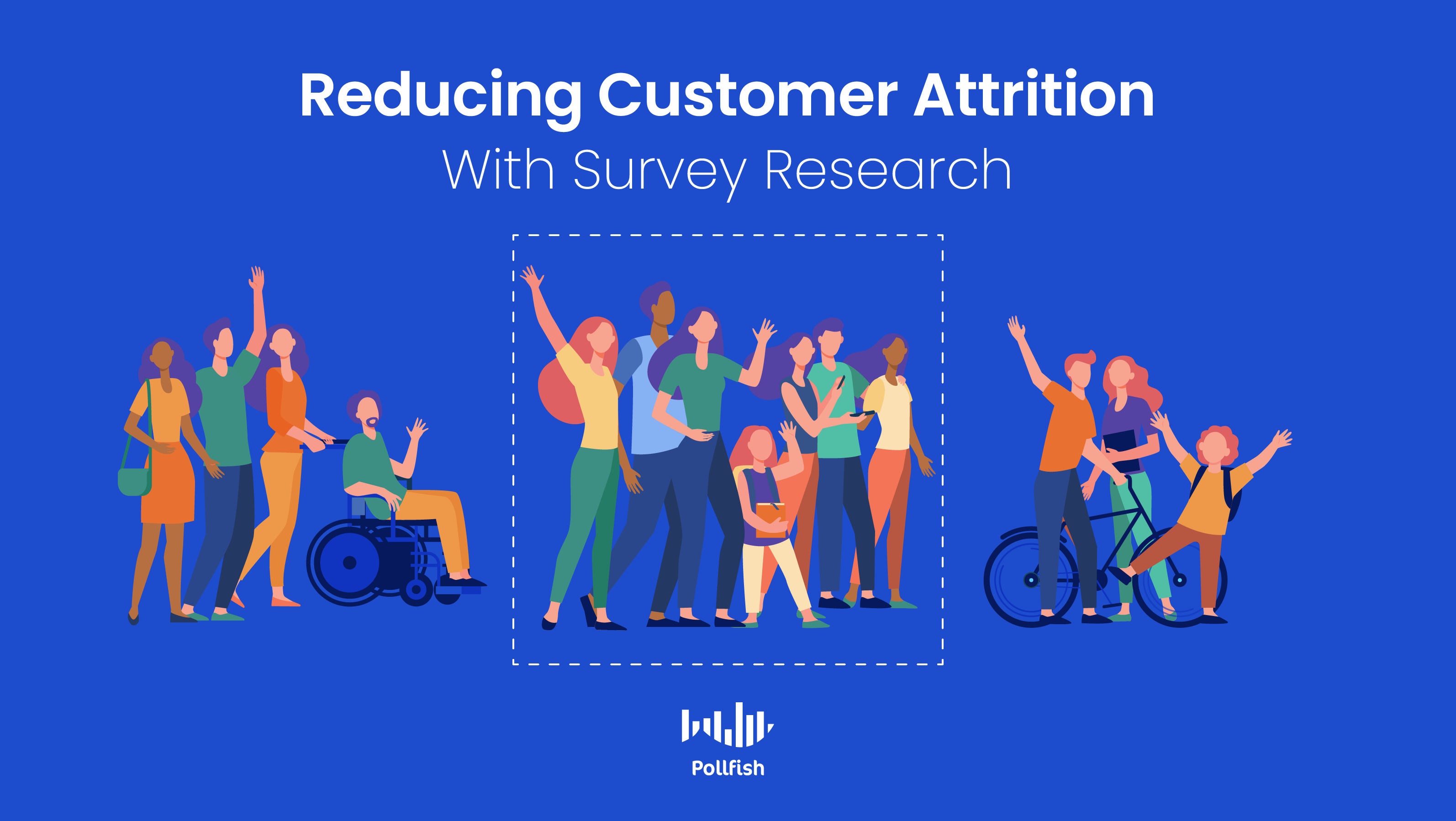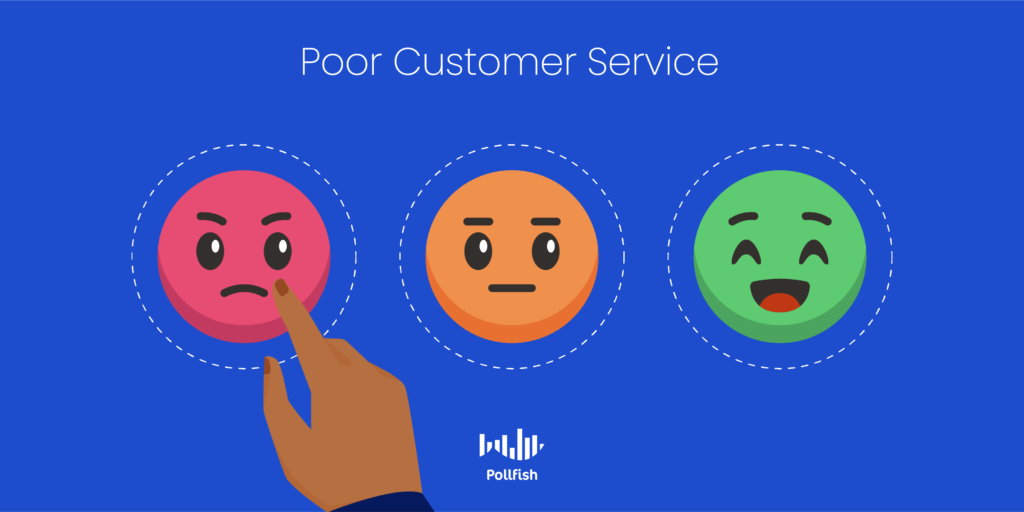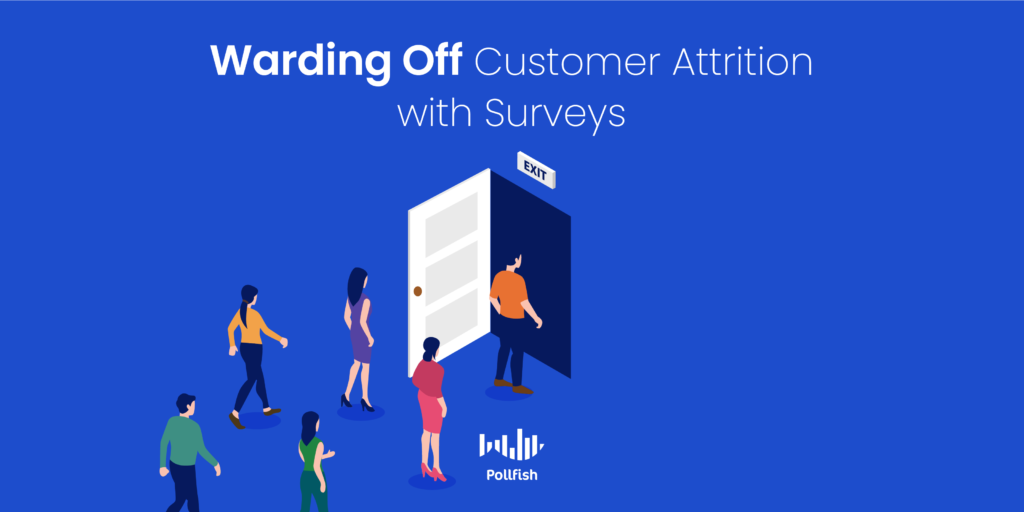Reducing Customer Attrition With Survey Research

All businesses deal with some degree of customer attrition, even long-established ones that hold high consumer loyalty. This includes prominent brands like Apple, Nike and the Home Depot.
Given that even these major brands contend with lost customers, startups and younger businesses ought to pay attention to their own customer attrition and work towards lowering at whenever possible.
Attrition is a serious consequence for businesses, as American companies lose 23% to 30% of their customers each year from a lack of customer loyalty alone.
50% of customers naturally churn every 5 years. While this statistic may not seem as severe as the prior, only 1 out of 26 unhappy customers complain to a business; the rest simply churn. This is a grave detriment to businesses, as it averts them from finding the root cause of their attrition.
This article examines customer attrition, its two main types, why customers churn, how to avoid it and how survey research helps reduce attrition.
Understanding Customer Attrition
Also called customer churn, customer turnover, customer cancellation and customer defection, this phenomenon deals with the loss of customers from a business, especially the kind in which customers never return to a business they had frequently or occasionally patronized.
Businesses can acquaint themselves with their customer attrition, by calculating their customer churn rate, a financial metric that measures the percentage of customers churning within a certain time frame.
Most customers do not remain active customers permanently; there are several reasons behind this. Some of these reasons are preventable, as they occur due to issues that a business itself causes, whether it is a poor product, experience or lagging behind competitors.
Other reasons for customer turnover spring purely from the customers, such as a life event that greatly reduces their purchasing power, such as the loss of employment, or a lack of interest in patronizing certain niches.
As such, whether a customer makes a one-time purchase or is a loyal customer of many years, every customer will eventually cease their relationship with a business.
The Two Main Types of Customer Attrition
There are two main types of customer defection that businesses should consider to be able to distinguish among the kinds that occur to their customers. These two are known as active and passive attrition.
Active Attrition
This is typically associated with subscription-based business models, the kinds that are commonly used in the Internet, publishing and telecom industries. As such, it refers to customers who cancel their subscription to a phone line, magazine or newspaper. It also involves the cancellation of digital services, such as app, data, streaming and SaaS service.
Passive Attrition
On the other hand, there’s passive attrition, which simply occurs when a customer stops transacting with a business, even if it is to make one-off purchases. This kind of attrition is predominantly associated with physical retail stores, e-commerce websites, on-request service providers and others.
Typical Reasons Behind Customer Attrition

Customers can churn for whatever reason they like, especially one-time shoppers, who may not have paid attention to the brand or store they bought from when they made an emergency or rushed purchase.
Then there are the more conscious and personal causes as to why customers end their business relationship. The following lists the typical reasons behind churning customers, including consciously and unconsciously-made decisions :
- Poor service
- This involves customer service and support, along business services on offer
- Lack of a personalized service and experience
- Marketing personalization is a must, as greeting signed-in customers by their names is insufficient. Personalization allows customers to feel as though they are not being marketed to.
- Cost / value breakdown
- Customers may find certain price points disagreeable and switch to competitors.
- Customers may not feel prices are commensurate with the value of company offerings.
- Lost customers (contact information outdated)
- Some customers change their contact information without updating it across company databases.
- Competitor superiority
- Competitors can outshine a business when they offer innovation, better products and services, personalization, lower prices or a number of other offerings.
- No longer in the market (doesn’t need)
- Customers don’t require buying the same things regularly when the need for it runs out.
- Customers cannot reach goals
- This occurs with digital experiences, for example, a website with a poorly working search function or the products themselves,
Avoiding Customer Attrition
There are various strategies that businesses can use to ward off customer attrition, including mapping out plans via a strategic planning process.
Firstly, businesses should hone in on their customer acquisition, making it more targeted so that new customers are better-suited for retention. One of the major mistakes businesses make in acquiring new customers is netting those who are not the best fit for the company.
Some efforts to gain new customers yield the wrong kinds, such as those with loss-leader offers or those from a particular channel. To avoid bringing in the wrong customers, businesses should hyper-target their customers via market segmentation and forming customer personas. At times, it is going to be reasonable to spend more to target customers who will bring a long business relationship, including those with a higher customer lifetime value (CLV).
Next, businesses ought to improve their business offerings, whether it is a product, several products, a service or an experience. All of these tie into a business’s performance and factor into customer retention and loyalty. Brands must improve their customer loyalty, as it is the primary driver of retention — the polar opposite of customer attrition.
In order to improve in all of these areas, businesses need to assess their current products, services and experiences. They should consider the following: does their business hit or miss the mark when it comes to their products and services? Does their business provide useful and positive customer experiences? After considering these questions and others, they should work towards innovation and improvement, which they can later promote.
Brands must augment their marketing strategy, making their marketing efforts more personalized and up-to-date. If not, their competitors surely will. Many businesses already use a next generation approach to appeal to their target market. For example, Glasses USA offers a virtual try-on of their products and Patagonia takes part in sustainability and green marketing, a tactic that resonates with its customers.
Finally, businesses can cut the effect of customer attrition by predicting it. They can achieve this by implementing predictive behavior modeling, a practice that helps companies predict the future behavior of their customers. This allows marketers to improve on the effectiveness of their marketing efforts.
How to Reduce Customer Attrition with Survey Research

Survey research goes a long way towards reducing customer attrition. This is because in order to avoid churn, businesses must satisfy and delight their customers. In order to do this, they must know their customers’ needs, desires, aversions, opinions, sentiments and more.
The more intimately a business is acquainted with its target market, the better it can cater to it. After all, how can a business, or anyone, know how to serve and market to customers without knowing their preferences, sensitivities and wants?
Survey research uncloaks the unknown when it comes to customers, as surveys allow market researchers to study virtually any topic concerning their business and customers. In this way, innovating new product features, and marketing certain messages will no longer be a mystery for brands.
When it comes to customer attrition specifically, brands can set up their surveys to study what drives customers away, along with what they look for in a variety of matters. For example, businesses can study customer aversions by surveying them on specific product features, prices, sales, cultural trends and current events.
As for the latter, brands can observe which marketing ads, images, offers and promotions customers crave the most through surveys. Businesses can set up scaled questions and matrix questions so that customers can rate their necessities and desired items. With this information in tow, businesses can make informed and data-backed decisions, the kind that have a far greater impact on reducing customer attrition.
Retaining Customers for the Long Term
Given the oftentimes staggering customer attrition rates, businesses should work towards strategies to reduce their own customer churn. While there are many tactics that businesses can employ to cut their customer turnover, using an online survey platform is the most proactive way to do so.
By studying all the wants, needs, opinions and aversions of their customers, businesses can avoid ensuing marketing faux pas, product blunders and other snafus that drive their customers away. The key is to use the proper online survey platform.
A strong online survey platform provides artificial intelligence and machine learning that disqualifies questionable users (such as VPNs, respondents that don’t pay attention) offers a wide range of filtering data options, engages users in their natural digital environments via random device engagement (RDE) sampling and much more.
A business that uses an online survey platform with these capabilities and more is well-equipped to stave off customer attrition and retain more customers.
admin
Ready to Try Pollfish?
Create your survey with AI, target high-quality respondents starting at $0.95 per complete, and start getting results in just minutes in real-time. From running a simple product concept survey to managing a constant stream of trackers for dozens of clients in dozens of countries, we’ve got you.
